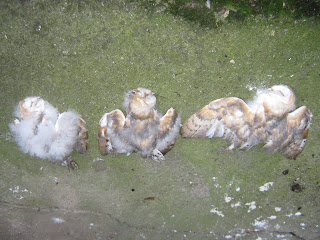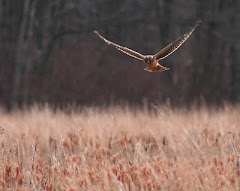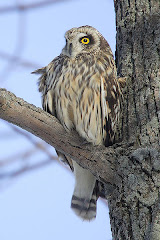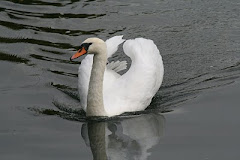.jpg)
There
have been times when, as a scene unfolds, I find it difficult to believe that
what I’m watching is not being stage-managed. Yet these dramas are often played
out in the most mundane of circumstances. I shall never forget one particular
drama that was acted out as I was washing the dishes during the particularly
cold winter of 2009-10: a kitchen sink drama if ever there was one.
As is so
often the case, it started with a glimpse of movement. This time it was
directly beneath the window, and once again my first guess, that it was a bird
ducking underneath the gate, was wrong. I leant forward to see what had
distracted me from my chores (it doesn’t take very much) and was quite
surprised to see that it was a stoat, struggling to make its way out of the
drive towards the bridge. The reason for its exertions soon became shockingly
clear. To the right of its head, which it was holding impossibly high, I could
now see the wings of a small bird, probably a chaffinch, still flapping desperately
as it tried to escape.
The stoat
struggled on past the brambles on the river bank, and then lifted its front
legs and its struggling captive onto the low wall that runs alongside the
bridge. I knew it would be impossible to rescue the bird, even if that had been
the correct course of action, neither did I have time to reach for my camera,
so I shifted my position and watched, fascinated and horrified.
What
happened next took my breath away. Without warning, a male sparrow hawk,
obviously attracted by the flapping of wings, dropped from above and covered
the stoat with its own outstretched wings. The sparrow hawk, a regular visitor
to the garden, took off again within seconds, its talons empty, and the stoat disappeared
into the cover of the brambles. One nil to the stoat.
The whole
episode had lasted no more than ten seconds, but what an experience! How many
hours, days, or even years, would I have to sit with a camera to capture such a
sequence of events? The lesson, of course, is ‘be vigilant’. Anyone interested
in wildlife can be a witness to such dramas, as long as your eyes are open, and
not glued to the television or your ‘phone.


.jpg)


.jpg)























































.jpg)























